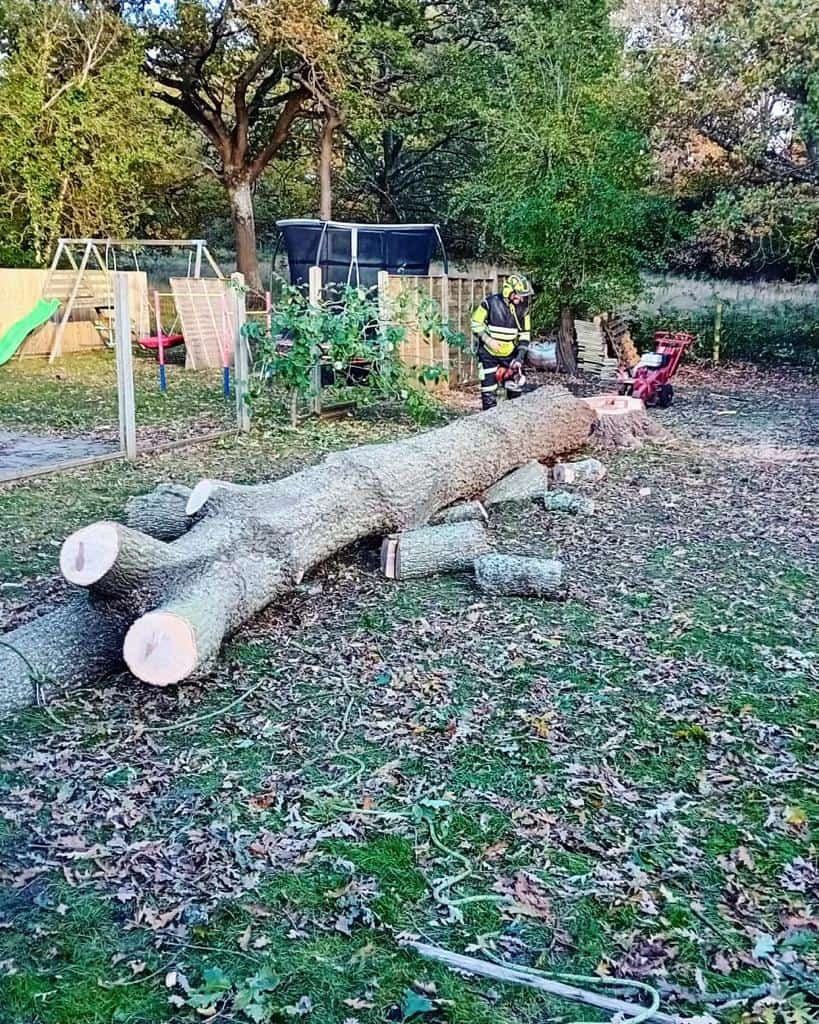Introduction: At LM Tree Surgery Portchester, we understand the importance of proper tree care to ensure the health and beauty of your landscape. One essential aspect of tree maintenance is pruning, which, when done correctly, can significantly improve light penetration. Enhanced light penetration is crucial for the overall health of your trees and the plants beneath them. This blog post will guide you through effective pruning techniques to maximise light penetration.
Why is Light Penetration Important?
Light penetration is vital for photosynthesis, the process by which trees and plants convert sunlight into energy. Improved light penetration helps to:
- Promote healthier, more vigorous growth
- Increase flowering and fruit production
- Improve the health and appearance of understory plants
- Reduce the risk of fungal diseases by enhancing air circulation
When to Prune
The best time to prune most trees for light penetration is late winter or early spring before the new growth begins. Pruning during this period minimises stress on the tree and reduces the risk of disease transmission. However, dead or diseased branches can be removed at any time of the year.
- Tools You’ll You’llruning shears: For small branches and twigs
- Loppers: For medium-sized branches
- Pruning saw: For larger branches
- Pole pruner: For high branches out of reach
- Protective gear: Gloves, safety glasses, and a hard hat
Pruning Techniques to Improve Light Penetration
- Crown Thinning
Crown thinning involves selectively removing branches to reduce the density of the tree’s trees. This technique allows more light to filter through the tree and improves air circulation.
- Identify: Start by identifying branches that cross, rub against each other, or grow inward.
- Remove: Use pruning shears or loppers to remove these branches. Cut back to a healthy lateral branch or the main trunk.
- Maintain Balance: The tree’s shape is maintained by evenly thinning throughout the canopy.
- Crown Raising
Crown raising involves removing the lower branches of a tree to elevate the canopy. This method increases light penetration to the ground beneath the tree.
- Select Branches: Choose lower branches that are blocking light.
- Prune Gradually: Avoid removing too many branches at once, which can stress the tree. Aim to remove at most 20-25 % of the canopy in one year.
- Make Clean Cuts: Use sharp tools to clean cuts outside the branch collar to promote healing.
- Crown Reduction
Crown reduction is the process of reducing the overall size of the tree’s trees. This method can improve light penetration while maintaining the tree’s tree’s form.
- Identify Branches: Select branches that are excessively long or out of proportion with the rest of the canopy.
- Cut Back: Prune these branches back to a lateral branch that is at least one-third the diameter of the cut branch.
- Avoid Topping: Never top a tree, as this can lead to weak, spindly growth and increased susceptibility to pests and diseases.
- Selective Pruning
Selective pruning focuses on removing specific branches that are obstructing light. This method is ideal for targeted light improvement.
- Assess the Tree: Identify which branches are casting the most shade.
- Prune Carefully: Remove these branches, ensuring they do not create large gaps that could harm the tree’s structure.
Pruning Tips for Specific Tree Species
- Deciduous Trees: These trees often benefit from crown thinning and reduction. Remove at most one-third of the live crown in a single season.
- Evergreen Trees: Focus on removing dead or diseased branches. Light thinning can be done to improve air circulation.
- Fruit Trees: Prune fruit trees annually to promote fruit production and improve light penetration. Use thinning cuts to maintain a balanced canopy.
Conclusion: Proper pruning techniques are essential for improving light penetration and ensuring the health and beauty of your trees.
Call us on: 023 8235 6058
Click here to find out more about LM Tree Surgery Portchester
Click here to complete our contact form and see how we can help you with your tree’s needs.

